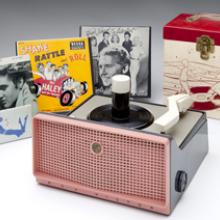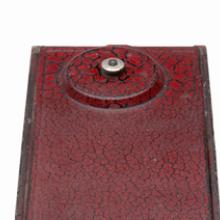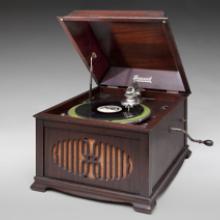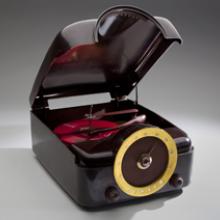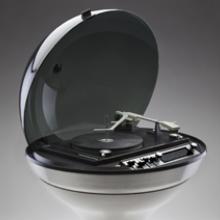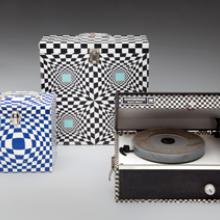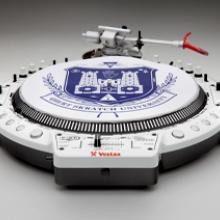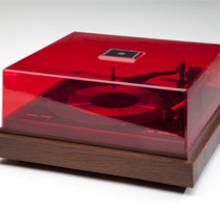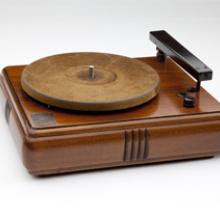Revolutions per Minute: The Evolution of the Record
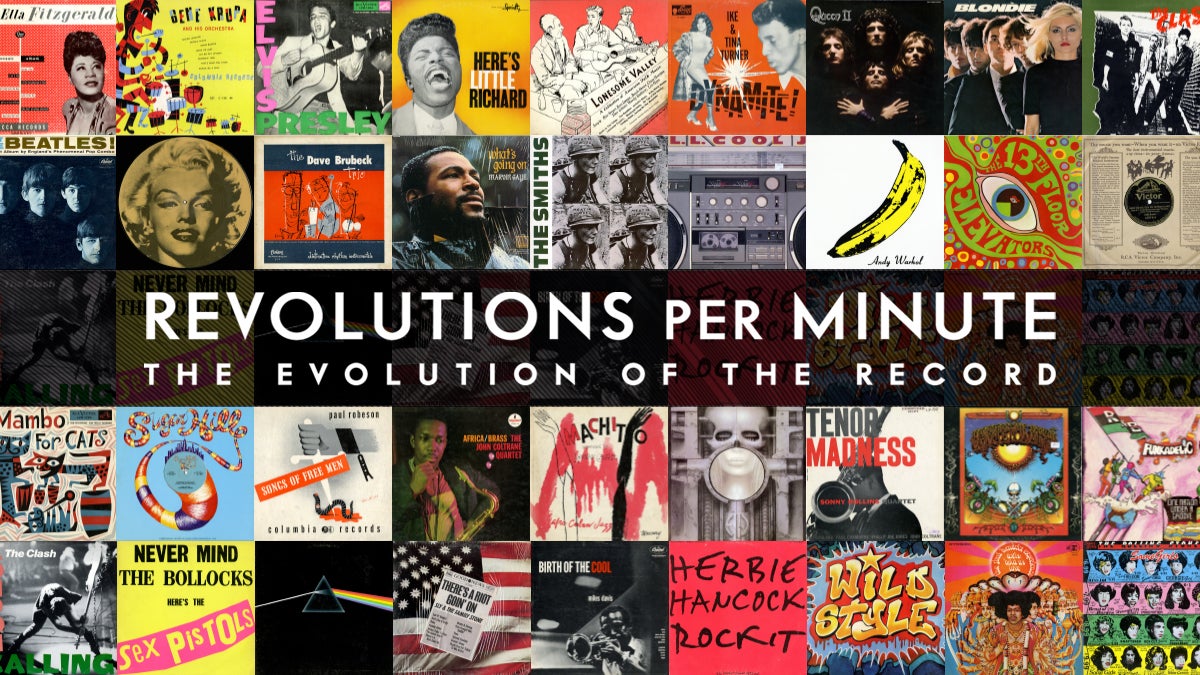
Revolutions per Minute: The Evolution of the Record
For decades, twelve-inch vinyl records encased in colorful, cardboard jackets prevailed as the standard in recorded music. In the present age of downloading music via the internet, it seems hard to believe that these large, black discs continued to grace store shelves until the 1980s before being supplanted by the compact disc.
The wax cylinder, one of the earliest forms of analog sound recording invented in 1877 by Thomas Edison (1847–1931), was soon surpassed by the record. Emile Berliner (1851–1929), a German-born U.S. immigrant, invented a device that played flat discs in 1888. Early records, fabricated from shellac, were heavy and brittle. Manufacturing techniques and the recording process improved in the early 1900s, and the revolutions per minute (rpm) settled at 78. These ten-inch discs, which contained nearly five minutes of music per side, remained the standard for decades.For decades, twelve-inch vinyl records encased in colorful, cardboard jackets prevailed as the standard in recorded music. In the present age of downloading music via the internet, it seems hard to believe that these large, black discs continued to grace store shelves until the 1980s before being supplanted by the compact disc.
Before the introduction of the radio, the phonograph was found in many American homes. The advent of radio programming and the stock market crash of 1929 nearly put an end to record sales. The repeal of prohibition in 1933, however, revived the record. Bars and restaurants in cities and towns across the country provided low-cost entertainment with the advent of the first commercial, record-playing jukeboxes.
Records were packaged in plain paper sleeves in music and appliance stores, typically behind the sales counter. All relevant information about the record company, music, and performers was displayed on the round label in the center of the record. In 1940, record packaging dramatically changed due to the ingenuity of the young graphic designer Alex Steinweiss (1917–2011). While employed as the art director at Columbia Records, Steinweiss proposed the concept of creating unique cover art for each album. Columbia initially hesitated due to production costs, but soon capitulated. The new covers generated great enthusiasm, and record sales soared.
In 1948, another revolutionary event occurred in the record industry -the development of the long-playing record, or LP. Introduced by Columbia, twelve-inch 331/3 rpm LPs, crafted from lightweight, unbreakable vinyl held over thirty minutes of music per side with a sound quality that surpassed the 78. Steinweiss also designed the industry-standard jacket for the LP, which remains in use today. RCA Victor introduced the smaller, seven-inch, 45-rpm record the following year. Perfect for the jukebox, the 45 became the choice for popular music singles, as it contained less than five minutes of playing time per side. Alongside the record, advances in record-playing technology and design progressed throughout the decades.
This exhibition traces the evolution of the record, showcasing a variety of records, album covers, and record players from wind-up phonographs and portable 45 players to picture discs and colored vinyl. Some of the featured cover designers and artists include Jim Flora, Reid Miles, and Andy Warhol. A selection of cover art from various musical genres is also highlighted, such as jazz, psychedelic, punk rock, and hip-hop.
The Art of the Album Cover
A vast number of records exist, each with its own unique cover imagery. Cover design may be outrageous, subtle, nostalgic, innovative, shocking, sophisticated, or humorous. Mediums used to create artwork include painting, collage, illustration, and photography. Album covers may evoke the artistry and style of the music within or seek to capture the recording artist's persona. Many individuals have gained worldwide recognition for their record cover designs- from early pioneer illustrators David Stone Martin (1913–1992) to later graphic designers such as Peter Saville (b. 1955) -who created covers for the British label Factory Records. A host of famous artists and photographers such as Salvador Dali (1904–1989) and Robert Mapplethorpe (1946–1989) have also produced cutting-edge cover art.
In the early 1940s, record companies realized that personalized covers could increase sales. Illustrators and designers were commissioned to create cover art. The generous size of the long-playing record (LP), introduced in 1948, further encouraged this new form of graphic design. Initially, cover design predominantly entailed illustrations. During the mid-1950s, designers began incorporating more photography into their designs. Jazz album covers first adopted black-and-white photography with innovative typography. The moody, documentary portraiture captured the essence of the new music. Continuing in this fashion, covers from each genre of music over the decades tend to reflect their contents, from the hallucinatory imagery of late 1960s psychedelic rock to the raw, do-it-yourself look of 1970s punk rock, and the urban street style of hip-hop.
The attention and resources given to elaborate and eye-catching album design increased in the 1960s. This continued throughout the 1970s and into the early 1980s, when the full-color, gatefold album cover became an industry standard. Designers now had a two-sided, twenty-four-by-twelve-inch center spread in which to create their artwork. Novelty covers such as double jackets, 3-D pictures, pop-ups, die-cuts, moving parts, along with colored vinyl, and picture discs reached their heyday.
Today, many recordings exist only on vinyl, still awaiting conversion to a contemporary media format. As archaic as records may now seem, some recordings continue to be pressed onto vinyl, and a handful of independent record stores and labels remain. Although records sales are relatively small, the passion of collectors keeps the format alive. Listeners say that they prefer the "warmer" sound quality of vinyl. Many enjoy the feeling of holding a twelve-by-twelve-inch album in their hands and, of course, relishing the cover art.
Photography is not permitted.
©2011 by San Francisco Airport Commission. All rights reserved.
